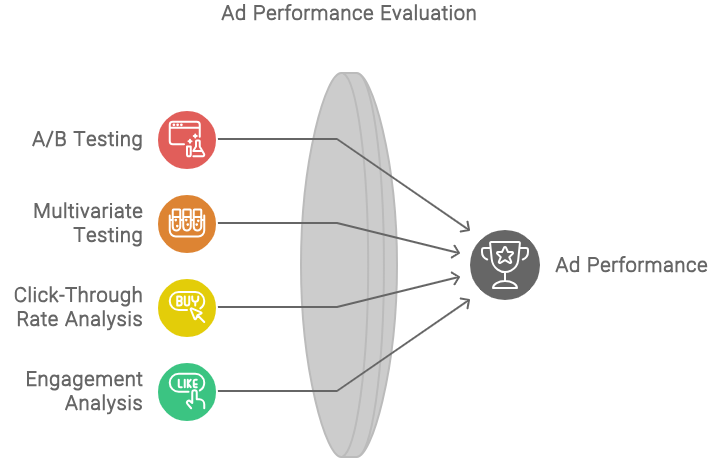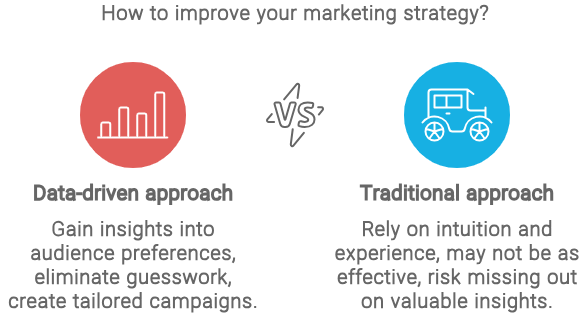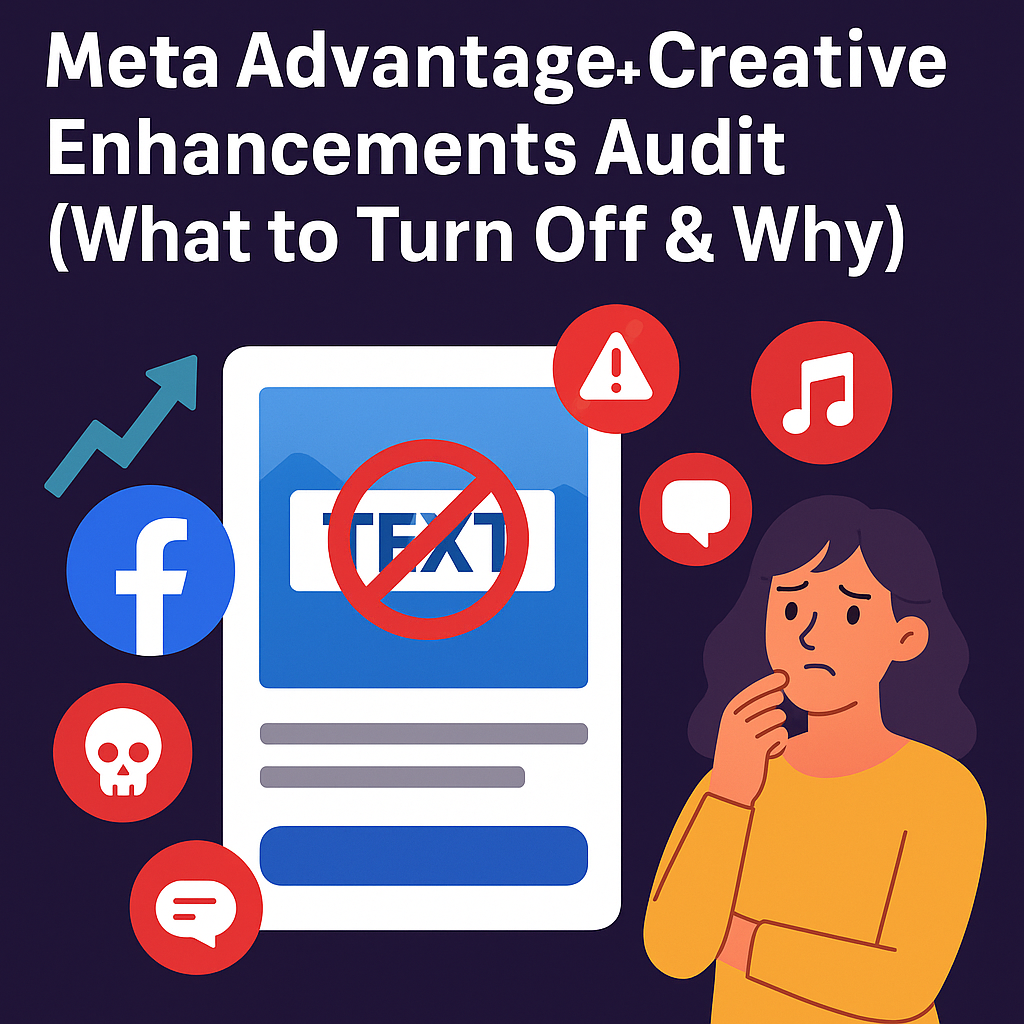In 2024, brands are battling for attention in a crowded digital landscape. eMarketer reports that US digital ad spending will surpass $300 billion this year, with much of that flowing into the feeds and timelines of your ideal customer. With online ad space at a premium, making the most of your ad dollars is critical. Simply throwing money at the problem won’t cut it; your ads need to be laser-focused and optimized for maximum impact.
The key to success? Creative analytics is a data-driven approach that empowers DTC brands to understand what resonates with their audience, optimize campaigns, and maximize ROI. With the rise of ad creative performance analytics, marketers can now dissect every component of an ad to uncover what truly drives results. But creative analytics is about more than just immediate returns. It’s about building a brand that connects with customers on an emotional level, fostering loyalty that translates into long-term growth.
This definitive guide equips you with the knowledge and tools to analyze creative performance like a pro, turning your ads into conversion machines.
Table of Contents
What is Creative Analysis? Understanding the Core of Data-Driven Ad Optimization
Before we dive into the “how-to,” let’s establish a clear understanding of what creative analysis entails.
Creative analysis is the systematic process of evaluating the effectiveness of your ad creatives (images, videos, headlines, copy, calls-to-action) against predefined performance metrics. It’s about moving beyond assumptions and relying on data to understand:
- What resonates: Which creative elements capture attention and evoke a desired response?
- What converts: Which specific creatives drive sales, leads, or other crucial business outcomes?
- What fails: Which creatives are underperforming and wasting your ad budget?
In essence, creative analysis helps you pinpoint the exact elements within your ads that drive crucial metrics like conversions and Return on Ad Spend (ROAS). It’s the engine behind data-driven creativity, allowing you to continually refine your ad strategy for maximum impact.
Why Analyze Creative Performance? What is creative analysis?
Forget vanity metrics. As a DTC founder, your focus should be on conversions and ROAS. Creative analysis helps pinpoint the elements in your ads that drive those crucial metrics. By understanding what works, you can optimize campaigns, tailor content, and maximize ROI.
But the benefits go even deeper. Data-driven creativity allows you to:
- Understand Your Audience Deeply: Gain insights into your target audience’s preferences, motivations, and pain points. This allows you to craft messaging that genuinely resonates and visuals that truly capture their attention.
- Optimize Ad Spend & Maximize ROAS: Identify which creatives are performing best and reallocate budget accordingly, minimizing wasted spend on underperforming assets and maximizing your return on advertising investment.
- Improve Targeting Precision: Analyze performance across different audience segments to identify which creatives resonate with specific demographics, interests, and behaviors. This refines your targeting for future campaigns.
- Enhance Brand Storytelling Consistency: Craft a more consistent and compelling brand narrative across all your creatives, ensuring your message is clear, memorable, and reinforces your brand identity.
- Drive Higher Conversion Rates: Studies show that strong creative can achieve up to 10x higher conversion rates. That’s the undeniable power of data-driven creativity.
Case Study: Elevating an Athleisure Brand’s Sales with Creative Performance Analysis
A DTC athleisure brand launched a new line of leggings with two video ads: one featuring a fitness influencer and another showcasing real women of diverse body types exercising in their daily lives. By analyzing creative performance, they discovered the “real women” video resonated more strongly with their target audience, generating higher engagement, click-through rates, and ultimately, conversions. This insight led them to reallocate budget to the higher-performing creative, resulting in a 15% increase in sales and a 10% reduction in cost-per-acquisition. This demonstrates the tangible ROI of strategic creative analysis. the higher-performing creative, resulting in a 15% increase in sales and a 10% reduction in cost-per-acquisition.

Essential Metrics & KPIs for Ad Creative Performance Analytics
To truly analyze creative performance, you need to track the right data. Here are the key metrics and Key Performance Indicators (KPIs) crucial for evaluating your ad creatives:
- Engagement Metrics:
- Click-Through Rate (CTR): The percentage of people who click on your ad after seeing it. A high CTR indicates strong ad relevance and appeal.
- Likes, Shares, Comments: Social proof and indicators of how much your audience resonates with the creative.
- Video Views & Watch Time: For video creatives, these show how engaging your video is and if viewers are watching it through.
- Engagement Rate: A broader measure of overall interaction with your creative.
- Conversion Metrics:
- Conversion Rate: The percentage of users who complete a desired action (e.g., purchase, sign-up) after clicking your ad.
- Cost Per Acquisition (CPA): The cost of acquiring a customer or lead through your ad creative. Lower CPA indicates more efficient creatives.
- Return on Ad Spend (ROAS): The revenue generated for every dollar spent on advertising. The ultimate metric for profitability of your ad creatives.
- Add-to-Cart Rate/Initiate Checkout Rate: Important indicators of purchase intent for e-commerce brands.
- Brand Metrics (for awareness campaigns):
- Reach & Impressions: How many unique users saw your ad and how many times it was displayed.
- Brand Lift: Measures the impact of your ads on brand awareness, recall, and consideration through surveys.
- Sentiment: The emotional tone of mentions and comments related to your ad.
How to Analyze Creative Performance: Proven Methods and Techniques
Now, let’s explore the practical methods to analyze creative performance and turn data into actionable insights.
1. A/B Testing (Split Testing)
This classic technique involves testing two versions of an ad with only one key difference (e.g., headline, image, call to action) to see which performs better.
- How to Implement:
- Identify a Single Variable: Choose one specific element to test (e.g., “Shop Now” vs. “Learn More” button, or two different background images).
- Create Two Versions: Design two identical ads except for the variable you’re testing.
- Run Simultaneously: Distribute both ads to similar audience segments at the same time.
- Track & Analyze: Monitor key metrics (CTR, conversions, ROAS) and statistically determine which version performs better.
- Pros: Simple to set up, provides clear and isolated insights into the impact of specific creative elements.
- Cons: Can be time-consuming if you have many elements to test; limited to testing one variable at a time.
- Example: A DTC furniture brand A/B tested two versions of a Facebook ad for a new sofa. One version featured a lifestyle image of the sofa in a living room, while the other showcased a close-up shot highlighting the sofa’s fabric texture. The lifestyle image generated a 12% higher CTR, indicating that showcasing the sofa in context resonated more effectively with their audience.
2. Multivariate Testing
Take A/B testing further by simultaneously testing multiple variables (e.g., headline, image, and call to action) to discover optimal combinations.
- How to Implement:
- Identify Multiple Variables: Choose several elements you want to test variations for.
- Generate Combinations: Use a testing platform to create all possible combinations of these variations.
- Run & Analyze: Distribute the variations to your audience and analyze which combination of elements performs best across your chosen metrics.
- Pros: Provides a holistic view of how elements interact, can identify winning combinations that wouldn’t be discovered through single-variable A/B testing.
- Cons: Can be complex to set up and analyze, requires a larger audience and budget to achieve statistically significant results.
- Example: A DTC meal kit service conducted multivariate testing on their Instagram ads, varying the headline (e.g., “Quick & Easy Dinners” vs. “Healthy Meals Delivered”), image (lifestyle vs. product-focused), and call to action (“Order Now” vs. “View Menu”). The winning combination featured a lifestyle image, the headline “Healthy Meals Delivered,” and the call to action “View Menu,” resulting in a 20% increase in conversions compared to the original ad.
3. CTR Analysis (Click-Through Rate)
CTR is a fundamental indicator of ad effectiveness, showing how many people found your ad compelling enough to click.
- How to Analyze:
- Track CTR: Monitor CTR across all your ads and campaigns within your ad platform dashboards.
- Identify High-Performers: Pinpoint ads with above-average CTRs and analyze their common creative elements (visuals, headlines, copy).
- Compare Segments: Analyze CTR across different platforms, audience segments, and ad placements to understand nuanced performance.
- Factors Affecting CTR: Ad relevance to the audience, visual appeal, clarity of the call to action, ad placement, and the precision of audience targeting.
- Example: A DTC jewelry brand noticed a significant difference in CTR between their Facebook and Instagram ads. By analyzing the creative, they realized their Instagram ads featured lifestyle imagery that resonated better with the platform’s visually-driven audience, while their Facebook ads relied on more text-heavy descriptions. They adjusted their Facebook creatives to incorporate more compelling visuals, resulting in a 15% increase in CTR.
4. Engagement Analysis
Go beyond basic clicks and delve into how users truly interact with your ads to gauge their interest and connection.
- Metrics to Track: Video views, average watch time, video drop-off points, likes, comments, shares, and click-through rates on interactive elements (e.g., polls, quizzes within the ad).
- Tools: Platform-specific analytics dashboards (e.g., Facebook Ads Manager, YouTube Analytics), social listening tools, and specialized creative analytics platforms.
- Example: A DTC clothing brand analyzed the watch time data for their video ads on YouTube. They discovered that viewers were dropping off at a specific point in the video where the ad transitioned from lifestyle shots to product close-ups. They revised the video to maintain a more engaging balance of lifestyle and product visuals, resulting in a 10% increase in average watch time.
5. Heatmaps and Eye-Tracking (for Deeper Visual Insights)
For a deeper understanding of visual attention, especially on landing pages or complex ad formats, consider these tools.
- How it Works:
- Heatmaps: Use color gradients to visually represent where users focus their attention, click, or scroll on a webpage or ad.
- Eye-Tracking: More advanced technology that tracks actual eye movements to provide precise data on visual attention patterns.
- Tools: Hotjar, Crazy Egg, EyeQuant, Microsoft Clarity.
- Example: A DTC eyewear brand used heatmaps to analyze the visual hierarchy of their landing page. They discovered that users were drawn to the model’s face in the hero image but often overlooked the call to action button. By repositioning the button closer to the model’s gaze, they achieved a 5% lift in conversions.
6. Sentiment Analysis (Understanding Emotional Response)
Gauge the emotional reception of your ads by monitoring qualitative feedback.
- How it Works: Analyze social media comments, reviews, and direct messages related to your ads and brand mentions.
- Tools: Social listening platforms like Brand24, SproutSocial, or Mention can help automate this process by tracking keywords and categorizing sentiment (positive, negative, neutral).
7. Brand Lift Studies (Measuring Brand Impact)
For campaigns focused on awareness or consideration, brand lift studies provide valuable insights into your ad’s impact beyond direct conversions.
- How it Works: Conduct surveys or questionnaires to measure changes in brand awareness, ad recall, message association, and purchase intent among exposed vs. unexposed audiences.
- Tools: Platforms like Facebook and YouTube often offer built-in brand lift measurement tools for their ad campaigns.

Top Tools for Analyzing Creative Performance
To execute precise ad creative performance analytics, you’ll need purpose-built tools that go beyond basic reporting. Below are some of the top platforms for turning creative data into actionable insights.
- Native Ad Platform Analytics (Essential Starting Point):
- Meta Ads Manager (Facebook/Instagram): Robust dashboards for detailed performance metrics, A/B testing, and audience insights.
- Google Ads: Comprehensive reporting for Search, Display, and Video campaigns, including conversion tracking.
- TikTok Ads Manager, LinkedIn Ads, Pinterest Ads, etc.: Each platform provides its own analytics for campaigns running natively.
- Google Analytics 4 (GA4) (Website Behavior & Attribution):
- A powerful, free web analytics tool that provides valuable insights into user behavior on your website. Use UTM parameters in your ad URLs to track conversions and attribute them back to specific creatives and campaigns.
- Creative Management Platforms (CMPs) & Creative Intelligence Tools:
- Motion: Offers a comprehensive suite of creative analytics features, including advanced A/B and multivariate testing capabilities, and performance tracking across various ad platforms. It excels in robust reporting and data visualization to extract actionable insights.
- CreativeX: Uses AI to analyze the visual elements of your ads, providing data-driven recommendations for improvement based on thousands of successful campaigns.
- Smartly.io / AdCreative.ai / Marpipe: These platforms often combine creative automation with built-in analytics, allowing for rapid testing and optimization of ad variations.
- Heatmap & Session Recording Tools:
- Microsoft Clarity: Offer heatmap and session recording functionality, providing visual representations of user attention and behavior on your ads and landing pages. They offer insights into scroll depth, click behavior, and user engagement with interactive elements.
- Social Listening Tools:
- Brandwatch / SproutSocial / Mention: These tools allow you to track mentions of your brand across social media and the web, helping you analyze the sentiment and public perception associated with your ads.
- Design Tools with Basic Analytics:
- Canva: While primarily a design tool, Canva now offers built-in analytics for ads created on its platform, providing basic data on impressions, reach, and engagement for simple creative performance tracking.
Best Practices for Maximizing Your Creative Analysis Impact
Successful ad creative performance analytics relies on aligning measurement frameworks with business objectives. By structuring your analysis around the full funnel, you ensure that creative insights contribute to both short-term performance and long-term brand equity.
To ensure your creative analysis efforts yield the best results for your DTC brand, follow these best practices:
Focus on the Right Metrics: Choose metrics that directly align with your objectives. If your goal is to drive sales, prioritize conversion rate and ROAS over vanity metrics like likes and shares. Always consider the entire customer journey, from awareness to purchase, and identify which metrics are most important at each stage.
Define Clear, SMART Objectives: Before diving into data, establish specific, measurable, achievable, relevant, and time-bound (SMART) goals for your analysis. Are you aiming to increase conversions by 15% in the next quarter? Or boost brand awareness among a specific demographic by 20% in the next six months? Your objectives will dictate your focus.
Segment Your Audience Meticulously: Analyze creative performance across different audience segments. What works for one group might not work for another. Segment by demographics (age, gender, location), interests, behaviors (past purchases, website activity), and engagement levels. Tailor your creatives to resonate with the specific characteristics and preferences of each segment.
Iterate and Optimize Continuously: Creative analysis is not a one-time task; it’s an ongoing, iterative process. Use data to continuously refine your ads and improve their performance. Don’t be afraid to experiment with different creative elements, messaging, and formats. A/B test variations, analyze the results, and apply those learnings to future campaigns.
Foster Cross-Team Collaboration: Break down data silos and foster open communication between your creative and marketing teams. Share insights from creative performance analysis and work together to optimize campaigns. Encourage feedback and collaboration throughout the entire creative development and optimization process.
Leverage Data Visualization: Present your findings in a clear, concise, and compelling way using charts, graphs, and interactive dashboards. Visualizations make it significantly easier to identify trends, spot outliers, and communicate complex insights effectively to all stakeholders, from your team to investors.
Document Your Process and Learnings: Keep detailed records of your creative analysis process, including the hypotheses you tested, the data you collected, the methodologies used, and the conclusions you drew. This comprehensive documentation will be invaluable for future campaigns, for onboarding new team members, and for sharing institutional knowledge across your organization.

Conclusion: Empower Your Brand with Data-Driven Creative Success
In the competitive DTC landscape, data-driven creativity—powered by strategic ad creative performance analytics is your key to unlocking sustained growth. By diligently analyzing creative performance and leveraging the power of creative analytics, you can uncover invaluable insights, optimize your ad campaigns for maximum efficiency, and achieve a significant return on your advertising investment.
But remember, it’s about more than just numbers. Creative analysis empowers you to connect with your audience on a deeper, more meaningful level, build a stronger and more resonant brand identity, and ultimately drive sustainable growth for your business. Embrace the power of data, experiment fearlessly with your creatives, and watch your DTC brand soar. Start analyzing your creative performance today and unlock the full potential of your ads.
FAQ Section
What is creative analysis?
Creative analysis is the process of evaluating the performance of your ad creatives (e.g., images, videos, headlines, copy) to understand what resonates with your target audience and drives desired business outcomes. It involves collecting and analyzing data on various metrics, such as impressions, clicks, conversions, and engagement, to identify winning elements and areas for improvement.
What is the difference between creative analytics and marketing analytics?
Creative analytics focuses specifically on the performance and optimization of individual ad creatives and their components. Marketing analytics, on the other hand, encompasses a broader range of marketing data, including website traffic, email marketing performance, SEO rankings, social media engagement, and overall campaign performance across all channels. Creative analytics is a subset of marketing analytics.
What are the most common mistakes to avoid in creative analysis?
Common mistakes include:
Lack of clear hypotheses: Without a specific question or idea to test, your analysis may lack direction.
Focusing solely on vanity metrics: Don’t get caught up in likes and shares. Prioritize metrics that align directly with your business goals, such as conversions and ROAS.
Neglecting audience segmentation: Always analyze performance across different audience segments to identify what resonates with specific groups.
Failing to iterate based on data insights: Don’t be afraid to experiment and make changes based on your findings. Creative analysis is an ongoing process of optimization.
Not considering the context of the ad: Analyze the placement, ad format, and surrounding content of your ad to understand its full impact.
How often should I analyze my ad creatives?
Analyze creative performance regularly, especially after launching new campaigns or making significant changes to existing ones. Establish a consistent reporting schedule (e.g., weekly or monthly) to track progress, identify trends, and react quickly to performance shifts. For always-on campaigns, continuous monitoring is advised.
What is the best way to present creative performance data to stakeholders?
Use clear, concise visuals like charts and graphs to communicate key findings. Focus on actionable insights rather than just raw data. Tailor your presentation to the audience’s needs, highlighting the information most relevant to their decisions and demonstrating the ROI of creative optimization efforts.
What is ad creative performance analytics?
Ad creative performance analytics refers to the practice of collecting and analyzing data on individual ad assets—such as images, videos, headlines, and CTAs—to evaluate their effectiveness. By using these insights, marketers can determine which creative elements drive performance, optimize campaigns in real-time, and maximize return on ad spend (ROAS). It’s a crucial subset of creative analytics focused specifically on measurable outcomes.




